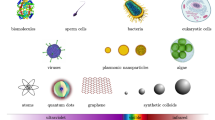Abstract
A new application of the principles of Tardy's compensation has been suggested in order to determine fractional-order isochromatic fringes, avoiding the necessity of compensating at isolated points. The accuracy of this method, although lower than the accuracy of point-by-point Tardy's compensation, is acceptable for most engineering work.
Similar content being viewed by others
Abbreviations
- I 0;1;2 :
-
light flux from first, second and third polarizers
- F 1;2 :
-
modulation functions
- E x0;y0 :
-
components of the light vector at the point of the entrance into the set of retarders
- E x;y :
-
components of the light vector after transformation by the set of retarders
- S(α) :
-
matrix of rotation
- G(Δ):
-
phase matrix
- 2Δ:
-
phase retardation
- α:
-
mutual relative angle of principal directions of the retarders
References
Post, D., “Isochromatic Fringe Sharpening and Fringe Multiplication in Photoelasticity,”Proc. of SESA,12 (2),143–156 (1955).
Richartz, M. andHsu Hsien-Yu, “Analysis of Elliptical Polarization,”Journal Opt. Soc. Amer.,39,136 (1949).
Schwieger, H. andHaberland, J., “Die Abwendung der Aquidensitometrie in der Spannungsoptik”,Bauplanung und Bautecknik,9 (2),71 (1955).
Author information
Authors and Affiliations
Rights and permissions
About this article
Cite this article
Cernosek, J. Towards a full-field compensation method. Experimental Mechanics 12, 152–154 (1972). https://doi.org/10.1007/BF02328565
Received:
Revised:
Issue Date:
DOI: https://doi.org/10.1007/BF02328565




